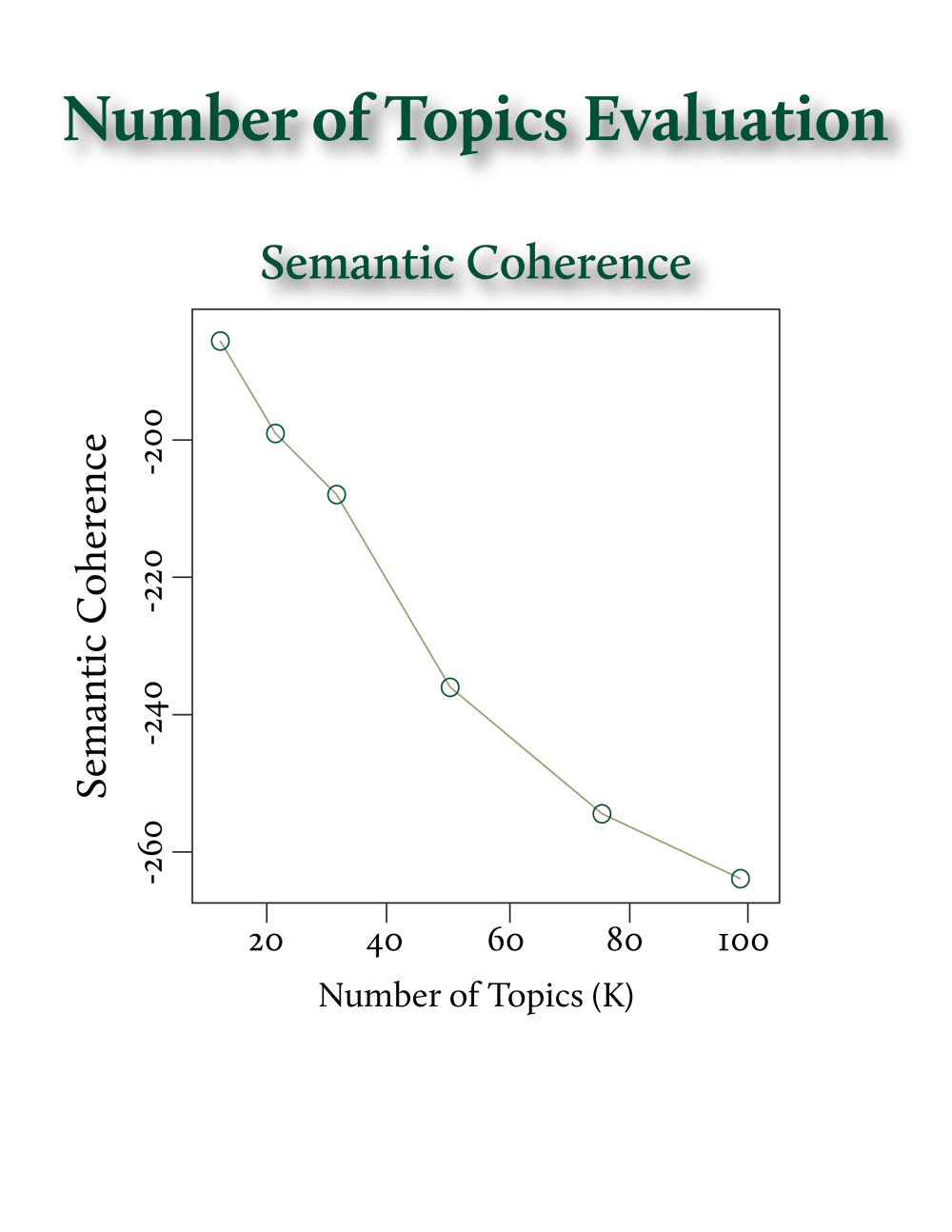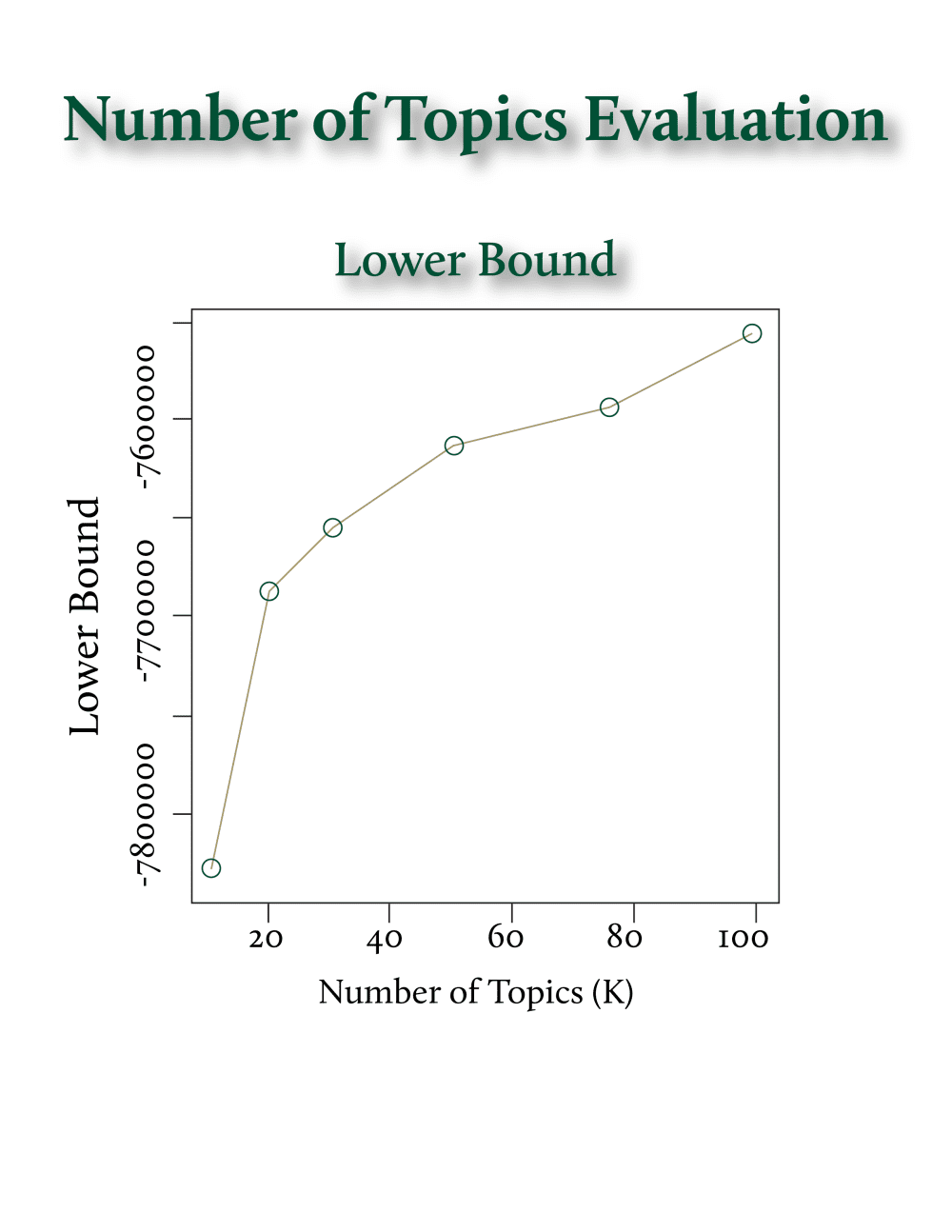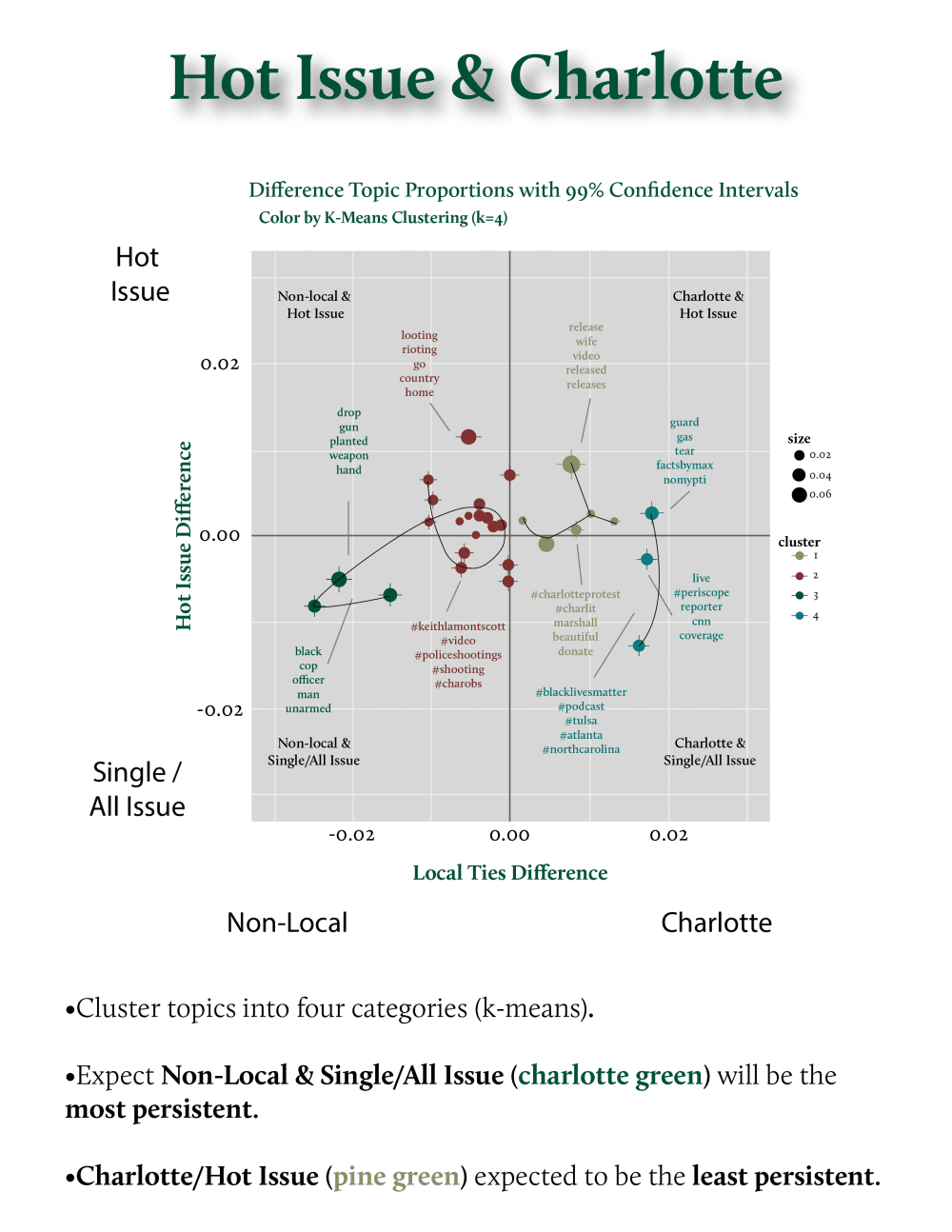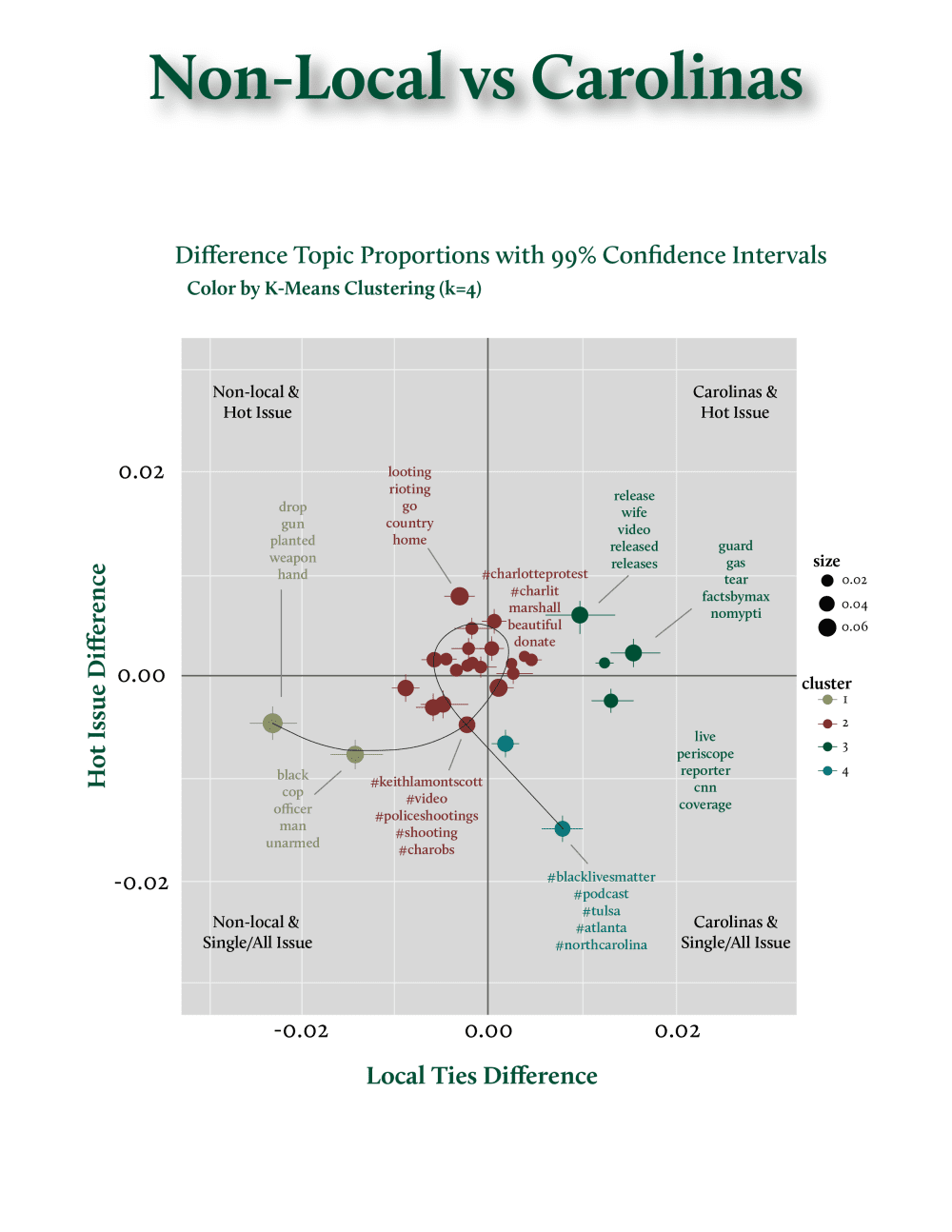Understanding 2016 Charlotte protests through Twitter text analysis
In the early afternoon of Tuesday, September 20, 2016, 43-year-old black father Keith Lamont Scott was shot while waiting for his son to return home from school. He was located just half a mile from UNC Charlotte. Within an hour, Scott’s name was trending on Twitter and almost one hundred people had gathered at the site of Scott’s murder, including a large number of UNC Charlotte students. Protests expanded over the next hours and days. Social media played a large role in organizing these uprisings. Over the next ten nights, the Queen City was rocked by marches, civil disobedience, and acts of public disruption in what came to be known as the Charlotte Uprising.
Analysis of the Twitter conversations on the Charlotte uprising was tested and used to predict the accuracy of their models through several methods. In this case, the lower bound of the confidence of the prediction of Twitter commentary classification.
Ryan Wesslan’s research can be found here. The full article can be purchased and downloaded, or faculty may use their library account to access. (Tiffany D. Gallicano, Ryan Wesslen, Jean-Claude Thill, Zhuo Cheng & Samira Shaikh (2023): Hot Issue Publics in the New Media Age: An Analysis of the Charlotte Protest, Journal of Public Relations Research, DOI: 10.1080/1062726X.2023.2233105)





